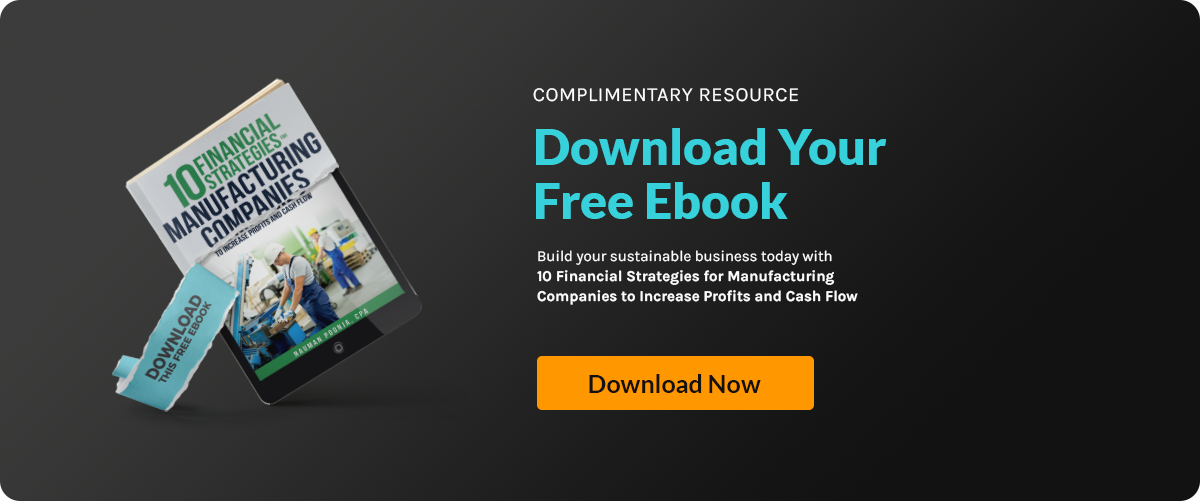6 Hiring Tips to Decrease Turnover One of the biggest causes of turnover is related to bad hires....
Automating Manufacturing: How the Right Tech Stack Can Help

Manufacturing companies today face more pressure than ever. To stay competitive, they can’t rely on outdated systems or disconnected tools. They need to streamline and automate as much as possible—and that starts with choosing the right technology stack.
A good tech stack is a group of connected software tools that help run every part of your business smoothly. When done right, it saves time, cuts down on mistakes, improves cash flow, and helps companies grow faster. In this post, we’ll break down the must-have tools and how automation makes manufacturing smarter and more efficient.
Why Integrated Tech Matters in Manufacturing
Many manufacturers still use a mix of old and new tools that don’t talk to each other. This leads to duplicate work, lost data, and slower decisions. But today’s integrated technology stacks fix that problem. They connect finance, production, inventory, customer management, and more—all in one place.
When all your systems share data, you get a clear view of what’s happening across the business. For example, using financial automation can help you spot risks early, reduce manual errors, and improve your understanding of cash flow. This is a key step if you’re working on a strong financial risk management plan for manufacturing.
Key Tools Every Manufacturing Stack Should Include
Every business is different, but these tools form the base of a strong manufacturing tech stack:
1. ERP Systems: The Central Hub
Enterprise Resource Planning (ERP) software connects all your departments. It manages finances, buying, inventory, production, and workforce planning.
Without an ERP, teams often use different data and systems—causing confusion and slowing down progress. A manufacturing-specific ERP can help track important details like inventory costs, supply chain delays, and production issues.
And if you don’t track inventory well, it can cause big problems. Things like lost items, ordering too much, or making too much product waste money. These issues increase inventory carrying costs, which hurts profits.
2. MES: Keeping Production on Track
A Manufacturing Execution System (MES) gives you a real-time view of what’s happening on the shop floor. It tracks materials, what’s being made, and what’s finished.
This helps you avoid waste, fix delays fast, and make sure workers are used efficiently. In a world where delays in one area can cause problems across the supply chain, MES is a must-have for staying flexible and fast.
3. Financial Forecasting Tools
You need to plan your spending carefully—especially when buying expensive equipment or expanding operations. That’s where financial forecasting tools come in.
These tools help you estimate demand, set budgets, and plan for the future. They also help you avoid spending too much and keep enough cash available for key projects. Many manufacturers now tie forecasting to capital purchase plans so they don’t run into funding problems during growth phases.
4. CRM: Helping Teams Understand Customers
A Customer Relationship Management (CRM) system isn’t just for sales teams anymore. It helps manufacturers better understand customer needs, improve product planning, and reduce leftover inventory.
With a connected CRM, your production team can see what customers are asking for and prepare ahead of time. This helps avoid making too much or too little product—and leads to smoother operations overall.
Smart Ways to Set Up Your Tech Stack
Having the right tools is only the start. You also need to set them up and use them correctly. Here’s how to do that:
- Focus on Integration First
Even if you buy the best tools, they’re useless if they don’t work well together. When systems don’t share data, employees have to fill the gaps manually, which causes delays and mistakes.
Plan how your systems will share data before buying anything. Sometimes, you might need to add middleware (a software bridge) to make everything connect smoothly.
- Choose Flexible Tools
Your business will change over time. That’s why your tools need to grow with you. Pick systems that are modular and scalable—especially your ERP, MES, and forecasting tools.
This helps you adapt as you create new products, enter new markets, or face new financial challenges.
- Train Your Team
Even the best system will fail if people don’t use it properly. Make sure your employees know how to use the new tools, and explain why they’re important. Get support from leadership and offer regular training so everyone stays on the same page.

Watch Out for Common Challenges
While tech can make life easier, there are some challenges to expect:
- High upfront costs – Good systems cost money, but the payoff comes later through time saved and better decisions.
- Integration delays – Setting up the systems can take time, especially if data isn’t organized well.
- Employee resistance – People may not like change, so training and support are key.
- Cybersecurity risks – More digital tools mean more risk. Make sure your tech is secure.
To prepare for these risks, include rolling forecasts and backup budgets in your plans. These allow you to adjust quickly if things don’t go as expected.
Final Thoughts: Make Tech Work for You
Using the right technology stack helps manufacturers shift from constantly reacting to problems to planning ahead with confidence. With ERP systems managing your operations, MES providing real-time updates, and financial tools helping you plan smarter, your company becomes stronger and more efficient.
But remember: success doesn’t just depend on the tools—it depends on how well they work together and how your team uses them. If you invest in a smart, flexible, and well-integrated stack today, you’ll be ready to lead the future of manufacturing tomorrow
Accounovation offers tailored solutions to help you creates process to prevent fraud. From systems to creating clear seperation of roles, our expert services are designed to help you prevent fraud in your organization.
Contact Accounovation today to learn how we can help your business achieve financial stability and growth.






